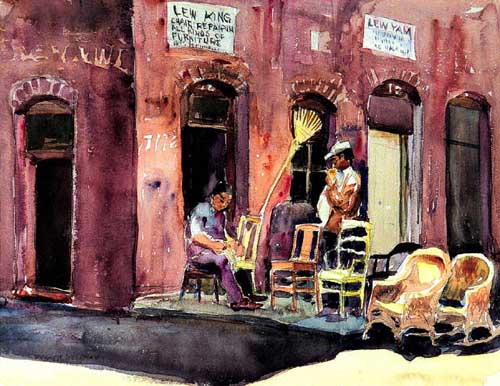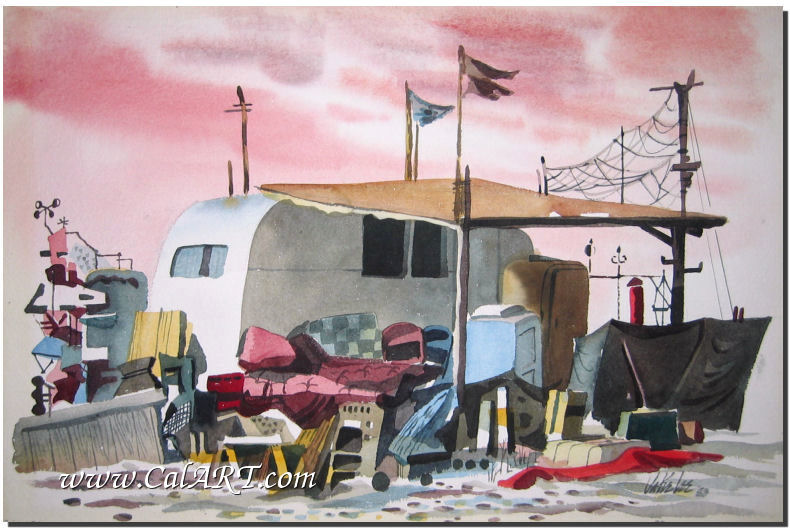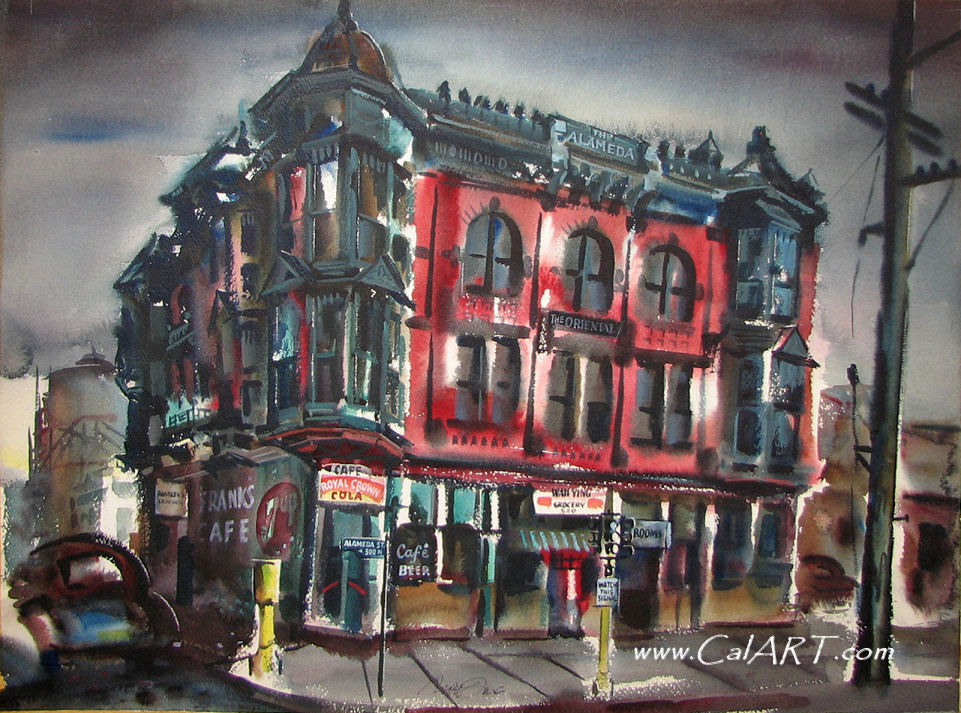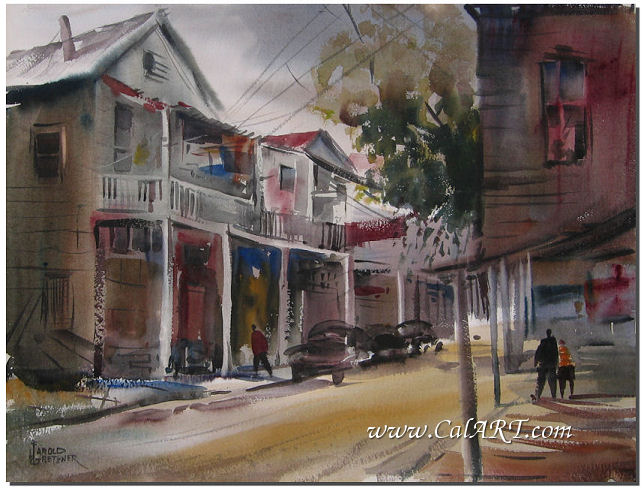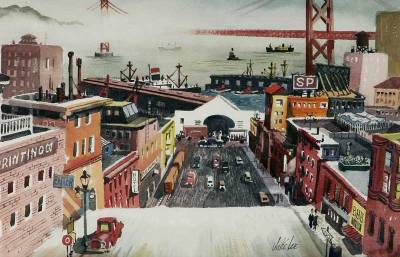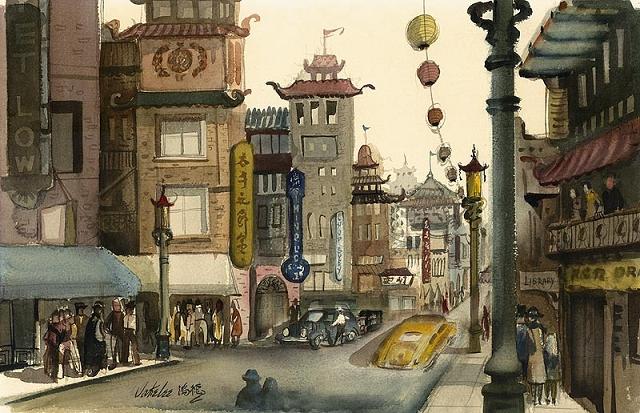 | California artists of the Depression-era |
|
|
Jake Lee |
NOEL QUINN (1915-1993)... |
|
Harold Gretzner |
Jake Lee, SF |
Chinatown. SF, J.Lee |
Working in the American populist tradition of Duke Ellington, William Faulkner, George Gershwin, and Sinclair Lewis, California artists of the Depression-era depicted a fascinating region and pattern of life quite different from other parts of the country. The Michael Johnson Collection makes the work of such artists its focus, in particular the watercolor paintings of the California School - a loose association of artists who interpreted the "American Scene" in a uniquely California way.
The California School''s love of the natural California landscape as well as for the ad hoc cacophony of the built environment is obvious and infectious, particularly in Johnson''s collection. Collecting few works that express the more difficult side of things during the Depression, Johnson gravitates toward paintings with narrative power that are lighthearted slices of life.
In Southern California, Regionalist artists such as EmilKosa, Dan Lutz, Ben Messick, Barse Miller, Phil Paradise, and Millard Sheets were active in the California Water Color Society and in the artistic community that grew up around Chouinard School of Art. Prominent among the San Francisco Bay Area artists were John Haley, Dong Kingman, Erle Loran, Alexander Nepote, and George Post. The "Berkeley School" led by Haley and Loran championed somewhat brighter colors and a more modernist approach than that in Southern California (in a style borrowed from Hans Hofmann and Raoul Dufy).
Many artists in California, like Rex Brandt and Milford Zornes, survived the Depression by working as muralists and easel painters on the federal arts projects instituted under Franklin D. Roosevelt''s New Deal. While most California Regionalists created mainly positive images of rural and urban life, paintings by some, such as Paul Sample, implied a mild social commentary. This was due to the vital presence of the Mexican muralists in California during the 1930s. The art cognoscenti of the day on the West Coast extolled Mexican art and were aware that it provided the model for the New Deal projects and propelled the national mural movement forward.
Numerous artists, including Lee and Mary Blair, Phil Dike, Hardie Gramatky, and Charles Payzant, worked in the film industry, especially the animation field. Because of the vivid interaction of film with the more traditional arts during the Depression, California Regionalist paintings share much with the cartoons of the Walt Disney Studios: humorous characterization, masterful depiction of action and movement, anthropomorphism, and rhythmic application of color to emphasize the emotional tone of the work. The film industry contributed to an economic recovery that was felt as early as 1934 in Los Angeles - far earlier than in other parts of the country. Therefore, the image of California as a Golden Land prevailed during the Depression.
Jake Lee (1915-1991) Born: Monterey, CA; Studied: Otis Art Institute (Los Angeles), San Jose State College (California); Jake Lee, a highly respected, yet quiet and enigmatic painter who influenced numerous other artists in California for decades, has not been the subject of a major retrospective, until now. "Sunshine & Shadow: In Search of Jake Lee" an exhibition hosted by the Chinese American Museum of Los Angeles, co-produced with the Automobile Club of Southern California, marks the first comprehensive and critical review of a prolific artist who embraced California landscapes and city scenes through watercolor.
Regionalist Painters of California 1930-1960
CalArt
California Watercolor
